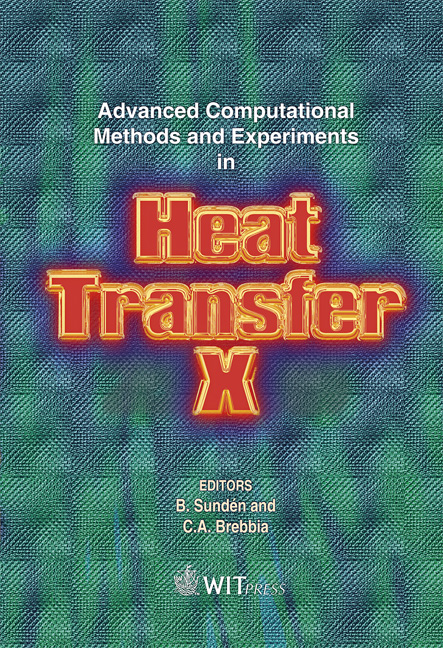Heat Transfer In Reactive Co/Al Nanolaminates
Price
Free (open access)
Transaction
Volume
61
Pages
10
Page Range
127 - 136
Published
2008
Size
1,277 kb
Paper DOI
10.2495/HT080121
Copyright
WIT Press
Author(s)
M. L. Hobbs, D. P. Adams & J. P. McDonald
Abstract
Reaction front propagation rates of free standing multilayer thin foils of Co/Al have been determined using a diffusion limited reaction model by means of a method-of-lines code with a stiff solver and adaptive gridding. Predicted and measured reaction front speed variations with bilayer thickness, tb, can be separated into three regimes. The three regimes are delineated by the critical bilayer thickness, tb,c, and the bilayer thickness that produces the maximum front velocity, tb,max. The critical bilayer is composed predominately of premixed or fully reacted CoxAly with a thickness of ~2.7 nm. The front velocity in the three regimes 1) is zero when 0 ≤ tb ≤ tb,c since there are no reactants 2) increases when tb,c < tb < tb,max since the reactant concentration increases with tb and 3) decreases when tb,max < tb since the diffusive resistance increases with tb. The sensitivity of front velocity to property variation is discussed. Steady and oscillatory combustion are predicted for this material pair. Keywords: Co/Al, gasless metal combustion, diffusion, nanolaminate. 1 Introduction Alternating nanoscale layers of pure metals can be ignited to produce localized and rapid heating for improved soldering or brazing of microelectronic assemblies [1]. Exothermic metal multilayers used for these applications consist of hundreds or thousands of individual reactant layers generally having a single out-of-plane periodicity. Figure 1.A shows a cross section of a multilayer nanolaminate of Co and Al deposited by direct current sputtering [2]. The layer periodicity is uniform through thickness and the metal layers are high-purity, polycrystalline metal. As shown in Figure 1.B, a 27 Å thick premixed CoxAly interlayer forms at the interfaces between the Co and Al layers.
Keywords
Co/Al, gasless metal combustion, diffusion, nanolaminate.





